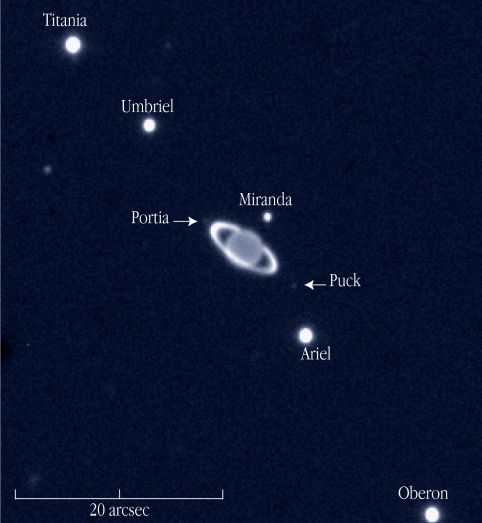
|
Credit & Copyright: E. Lellouch, T. Encrenaz (Obs. Paris),
J. Cuby , A. Jaunsen (ESO-Chile),
VLT Antu,
ESO
Explanation:
Yes it does look like Saturn, but
Saturn is one of only
four
giant
ringed
planets
in our Solar System.
And while Saturn has the brightest rings,
this system of rings and moons actually belongs to
planet Uranus, imaged here
in near-infrared light by the
Antu
telescope at the ESO Parnal Observatory in Chile.
Since
gas
giant Uranus' methane-laced atmosphere absorbs sunlight at
near-infrared wavelengths the planet appears substantially darkened,
improving the contrast between the otherwise relatively
bright planet and the normally faint rings.
In fact, the narrow Uranian rings are
all but impossible to see in visible light with earthbound telescopes
and were discovered only in 1977 as careful astronomers
noticed the then unknown rings blocking light from background stars.
The rings are thought to be younger than 100 million years and
may be formed of debris from the collision of a small moon
with a passing comet or asteroid-like object.
With moons named
for characters in
Shakespeare's plays, the distant
ringed
world Uranus was last visited in 1986 by
the Voyager 2 spacecraft.
|
January February March April May June July August September October November December |
| ||||||||||||||||||||||||||||||||||||||||||||||||
NASA Web Site Statements, Warnings, and Disclaimers
NASA Official: Jay Norris. Specific rights apply.
A service of: LHEA at NASA / GSFC
& Michigan Tech. U.
Based on Astronomy Picture
Of the Day
Publications with keywords: Uranus - rings - Uranus moon
Publications with words: Uranus - rings - Uranus moon
See also:
